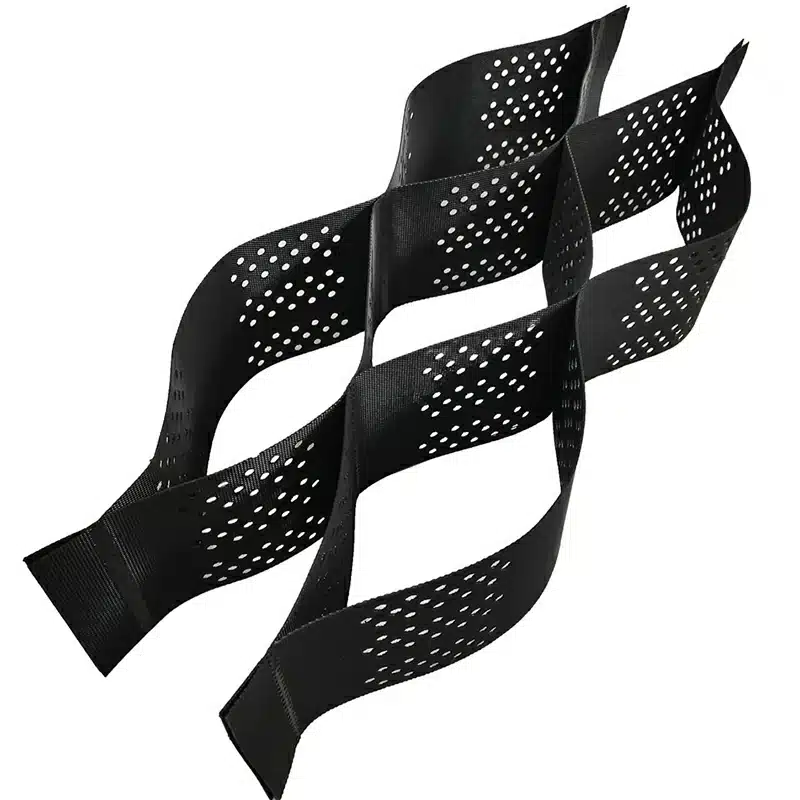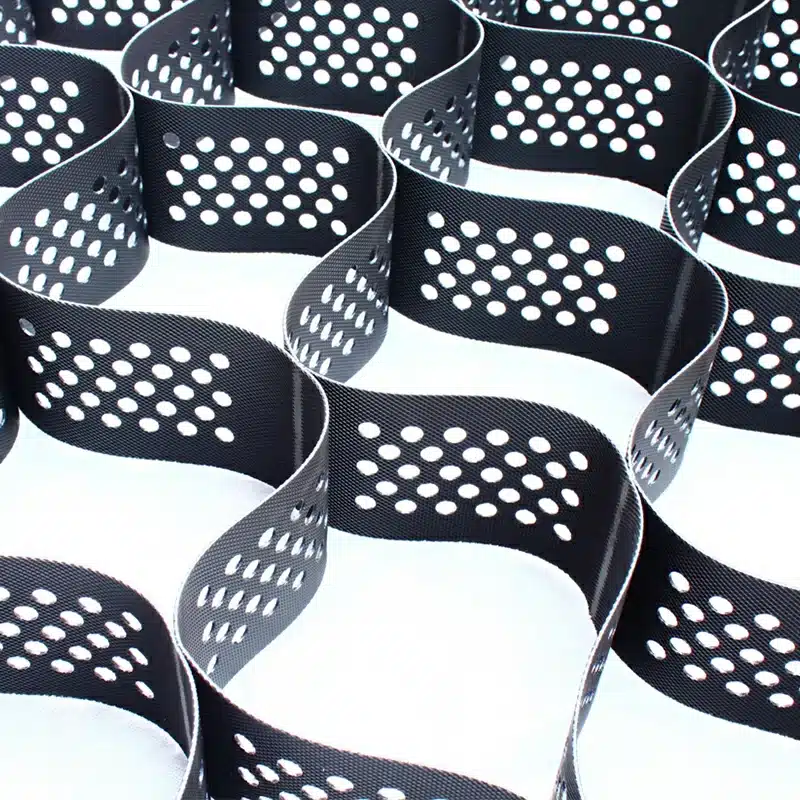+86-159 9860 6917
info@geofantex.com
geofantex@gmail.com
+86-400-8266163-44899
Geocell erosion control is an innovative solution for managing steep slopes. Geocells are cellular confinement systems that stabilize soil and prevent erosion by creating a flexible and durable structure. These honeycomb-like cells efficiently distribute loads, reducing soil or aggregate movement on slopes. This article explores the key aspects of geocells for erosion control and answers common questions about their application and effectiveness.
What Is the Maximum Slope for Safe and Effective Geocell Erosion Control?
Geocell systems are highly effective for stabilizing slopes, but understanding the recommended slope limits is crucial for safety and performance:
- Typical Limit: Most commercial geocell systems can safely stabilize slopes up to 1:1 (≈45°).
- Condition: Proper infill material—soil, gravel, or concrete—must be used according to design requirements.
- Installation Standards: Follow manufacturer specifications and best engineering practices to ensure stability.
- Drainage: Effective water management is essential to prevent hydrostatic pressure buildup behind the geocells.
- Steeper Slopes: Slopes beyond 1:1 may require additional reinforcement, such as geogrids, anchors, or retaining structures.
When installed correctly with suitable infill, proper compaction, and controlled drainage, geocell slopes up to 1:1 remain stable and erosion-resistant. Always consult a geotechnical engineer for project-specific designs to ensure long-term performance.

What is slope protection with geocells?
Slope protection with geocells uses 3D HDPE honeycomb structures to stabilize slopes and prevent erosion. These systems provide multiple engineering benefits:
- Erosion Control: cells hold soils and aggregates in place, reducing runoff erosion.
- Soil Stabilization: load distribution minimizes deformation, slip, and washout.
- Vegetation Support: confined soil supports plant growth and natural reinforcement.
- Drainage Improvement: channels and gaps allow controlled water flow.
- Long-term Durability: UV-resistant HDPE resists weathering, chemicals, and aging.
Geocells provide a strong and sustainable alternative for embankments, highways, retaining structures, and erosion-prone areas.
What Is the Best Fill Material for Geocells?
Selecting the right fill material for geocells depends on slope conditions, structural requirements, and the project’s intended use. Key options include:
- Soil (Native Soil): Cost-effective and ideal for landscaping, embankments, or moderate slopes. Sandy, clay, or loamy soils can be graded or mixed for better compaction.
- Gravel or Crushed Stone: Offers high load-bearing capacity and excellent drainage. Perfect for roads, heavy-traffic areas, and slopes requiring maximum stability.
- Sand: Commonly used for erosion control on slopes or shorelines; compacts easily to form a stable surface.
- Aggregate (Crushed Rock, Limestone): Recommended for industrial sites or areas exposed to vehicular traffic, providing durability and superior load distribution.
Pro Tip: Matching the geocell infill to your slope, load requirements, and drainage needs ensures optimal stability, erosion resistance, and long-term performance.
How to Cut Geocells?
Properly cutting geocells ensures precise installation and long-term performance. Follow these steps for accuracy and safety:
- Required Tools: Utility knife or heavy-duty scissors, measuring tape, chalk or marker, cutting mat, safety gloves, and protective goggles.
- Measure and Mark: Lay the geocell flat. Measure dimensions carefully and mark cut lines clearly.
- Cutting Technique:
- Stabilize While Cutting: Hold the geocell firmly without stretching to maintain its shape.
- Edge Finishing: Trim any uneven or rough edges for a neat, professional finish.
- Safety Tips: Always cut on a stable surface, wear protective gear, and keep blades sharp.
Cutting geocells to fit slope contours and corners accurately reduces installation errors and ensures optimal erosion control performance. For full guidance, refer to detailed geocell installation tips.
Geocell erosion control is highly effective for stabilizing steep slopes and preventing erosion. Supporting slopes up to 1:1, geocells provide reliable slope protection. By filling them with suitable materials like gravel or soil, you can create a stable, erosion-resistant surface. The ease of cutting and customization enhances their versatility, making geocells ideal for commercial and residential applications.



Get Free Sample
We’ll respond as soon as possible(within 12 hours)






















